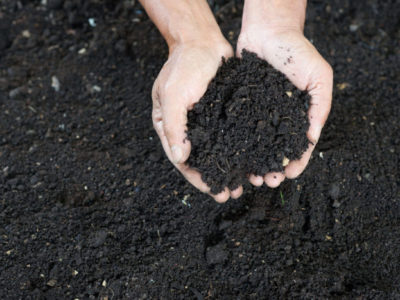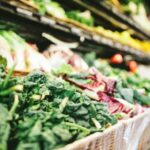Like many people, you may not spend much time thinking about soil. But soil is essential to humans, who get 99.7% of their calories off the land (the remainder comes from oceans and other aquatic ecosystems).
Soil is made of countless organisms or microbes that create a dynamic and complex ecosystem. In fact, a single tablespoon of healthy soil should have about 50 billion microbes.
Microbes process the nutrients that protect plants from disease, help the soil store more water, and filter or neutralize harmful chemicals or toxins.
And a rich mix of organisms helps boost the nutritional value of our food and enables plants to produce beneficial phytonutrients such as antioxidants. Antioxidants and other nutrients support our immune system, regulate hormones, and support general health.
But, according to World Wildlife Fund, half of the topsoil on the planet has been lost in the last 150 years. And research shows that overall, topsoil is being lost from land areas at a rate 10 to 40 times faster than the rate of soil renewal. This situation threatens future human food security and environmental quality.
Most soil is lost due to erosion that occurs when it is not protected from the elements. For example, if the soil isn’t planted or has lost its ability to absorb water, it can wash away. Alternatively, if it dries out, the wind can blow it away. Lost soil may end up at the base of a hill, the end of a river, or in the ocean.
Given these trends, it is not surprising that soil health is at the heart of ESG strategies for food, pharmaceutical, and cosmetic companies that rely on biological resources.
Here are examples of three companies committed to regenerative practices to protect and improve soil quality:
- Cargill committed to promoting regenerative agriculture practices across 10 million acres of land in North America by 2030. They enroll farmers in Cargill’s RegenConnect™, a new regenerative agriculture program that pays farmers for improved soil health and positive environmental outcomes, including payment per metric ton of carbon sequestered.
- Bayer has committed to reducing the environmental impact of crop production by 30% by 2030 through new technologies that enable farmers to use fewer crop pesticides. For example, their research focuses on how microbes can help farmers grow healthier crops and improve their harvests. They are working with Ginkgo Bioworks to form Joyn Bio, a joint venture to create microbes that help crops extract nitrogen from the air. This process will significantly reduce the need for synthetic fertilizers that contribute to greenhouse gas emissions.
- Danone North America’s soil health program is four-years-old and they have gotten feedback from farmers that cost and risk are major barriers to adoption. So they recently launched a new benchmarking tool for farmers to measure and predict the financial impact of regenerative practices such as no-tilling, cover crops, and establishing buffer zones between crops. The tool uses farm-specific, verified data to propose regenerative agriculture practices. Users select a practice and the tool provides models with forecasted returns on investment to help farmers understand the profit impact over time.








